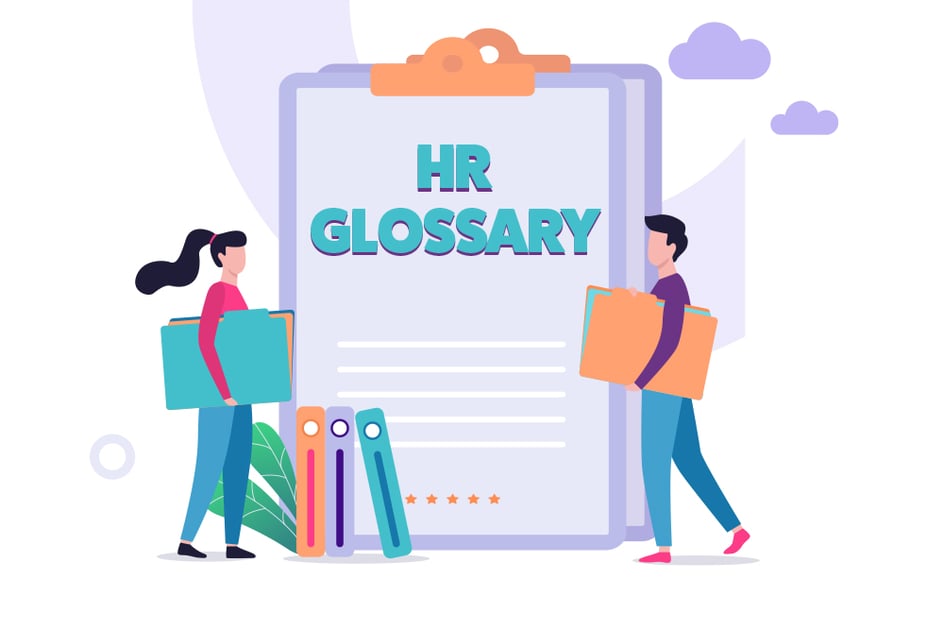PRO Resources’ glossary of basic HR terms contains all the definitions of concepts frequently used by human resources professionals.
Co-employment - A collaboration between an HR service provider (usually a PEO) and a client company where both parties share employment responsibilities and legal liability.
Employer of record (EOR) – A company that becomes the legal employer of your workers for different purposes, including tax filing, employment arrangement, hiring, termination, payroll processing, benefits administration, and onboarding.
HR administration – Managing organizational human resource functions, including payroll, benefits, workers' comp, recruitment, and others.
HR outsourcing - Delegating human resources tasks to a third-party HR service provider, such as a professional employer organization (PEO). The client company chooses which functions to delegate.
HR compliance – the process of adhering to all labor laws and other requirements related to human resources, including the Fair Labor Standards Act (FLSA), Affordable Care Act (ACA), Occupational Safety and Health Act (OSHA), etc.
HRMS (Human Resources Management Systems) – a software that helps manage HR functions, including payroll, benefits, training, and more. It automates manual HR tasks, organizes data, and provides data-driven insights.
Employee benefits administration – the process of putting together and managing employee benefits, including life insurance, 401(k), wellness plans, time off, health insurance, etc.
Payroll administration – A process of organizing legal compensation for employees' work. It can include recording work hours, calculating payroll, making timely payments, and managing payroll taxes.
Risk management – The practice of identifying the possible risks in the workplace, working out strategies to mitigate these risks, and designing response and recovery plans.
Workers compensation insurance – Insurance compensates workers' damages (medical and wages), which arise if the employee sustains injuries on the job. Companies that work with a PEO can take advantage of the organization's workers' compensation insurance.
Employee handbook – An employee manual containing information about the company culture, procedures, policies, workplace guidelines, expectations, and the worker's rights and obligations.
Employee assistance program (EAP) – A program designed to help employees resolve personal and work-related issues they can't handle independently. Examples are divorce counseling, substance abuse recovery, and career transition support.
COBRA - Consolidated Omnibus Budget Reconciliation Act - A federal law passed in 1985 allows employees who lose their jobs or experience another qualifying event to stay on the organization's group health plan for a certain period of time.
FMLA - Family and Medical Leave Act – This act allows eligible workers to take up to 12 weeks of unpaid leave to bond with a newborn or adopted child, care for seriously ill or injured family members, address their serious health conditions, care for a service member, or deal with family member's deployment.
HIPPA - Health Insurance Portability and Accountability Act – An act that regulates the privacy and security of healthcare information. Examples are blood test results, phone records, and medical bills.
Talent acquisition – A set of tactics, strategies, and processes designed for attracting, recruiting, and hiring suitable candidates to fill open positions in the company.
Employee retention – Strategies designed to keep the existing employees motivated, engaged, satisfied, and happy with their employment so they remain with the company.
Performance management – The process of clarifying responsibilities, overseeing work processes, setting priorities, and providing feedback with the goal of improving employee performance.
Onboarding – The process of educating, training, and welcoming employees into the company culture to help them start executing their responsibilities as quickly and effectively as possible.
Diversity and inclusion – A practice designed to create a workforce with different experiences, demographics, and characteristics while supporting an environment where all of these people feel welcome and ready to realize their potential.
Employee engagement – The extent of enthusiasm, commitment, and involvement employees feel toward their work.
Succession planning – A process of evaluating employees who have the potential to fill leadership roles that can be passed from another employee in the future.
Human capital - A set of skills, experience, knowledge, and education that employees invest in the company's operation.
Workforce planning – The process of evaluating, planning, and predicting workforce supply and demand in order to achieve business goals or streamline company operations.
Compliance – A set of strategies designed to ensure that the company's actions are in accordance with relevant regulations, laws, and guidelines.
Labor relations – A relationship between labor representatives (employees, trade unions) and employees.
Workplace safety – A set of tactics aimed at supporting the safety, health, and well-being of employees in the workplace.
Talent management – The process of identifying, attracting, developing, engaging, and retaining high-potential employees.
Employee relations – The practice of creating and maintaining a positive connection between employees and their managers.
Organizational culture – A collection of values, beliefs, attitudes, and practices that guide employee behavior in the workplace.
Streamlining Your HR Tactics with a PEO
Come back to this HR terms glossary whenever you need it! In the meantime, if you have questions, the experts at PRO Resources are ready to begin a conversation!
To learn more about PEO benefits and take advantage of other useful HR tools, contact our team at PRO Resources any time.


